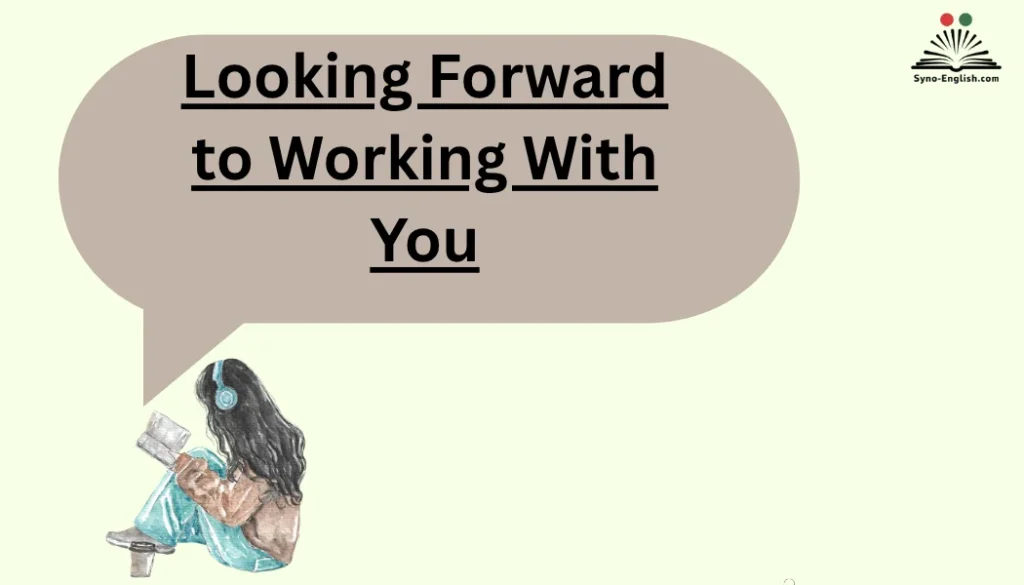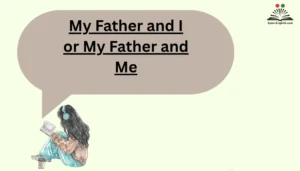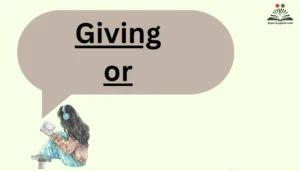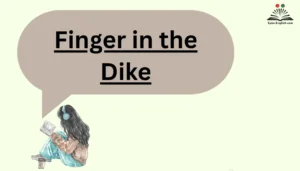In professional settings, effective communication has a rhythm like music, and knowing how to use it shapes your message. The question, Is It Correct to Say, often crosses our minds when we write in business emails, interviews, or LinkedIn messages — that classic phrase, “Looking forward to working with you,” feels familiar yet powerful.
I’ve seen and written it a dozen times, realizing it’s more than a polite line; it’s about how you present yourself with confidence and warmth while staying formal and appropriate.Sometimes, when looking forward to working on a project or joining kick-offs, this staple feels natural. Yet, it’s worth asking if it’s always grammatically correct for every situation.
Early in my career, I’d often second-guess my tone before I hit send, wondering if it matched the context. With experience, I learned that clarity, sincerity, and balance in tone matter more than overused phrases. The key is understanding how the same expression can change its effect depending on timing and audience
Grammar and Correctness of “Looking Forward to Working With You”
At first glance, this phrase looks simple. Yet grammar purists often raise questions about whether it’s 100% correct.
Here’s the breakdown:
- “Looking forward to” is a phrasal verb. The word “to” here is a preposition, not part of an infinitive.
- Because “to” is a preposition, it must be followed by a gerund (a verb ending in –ing), not the base verb.
So:
- ✅ Correct: I am looking forward to working with you.
- ❌ Incorrect: I am looking forward to work with you.
This small detail makes all the difference.
Grammar Tip: Any time you use “look forward to,” remember that the verb that follows must end in –ing.
Common Grammar Mistakes with the Phrase
| Incorrect Usage | Correct Usage | Why |
| I look forward to meet you | I look forward to meeting you | “To” needs a gerund, not base verb |
| Looking forward work with you | Looking forward to working with you | Missing preposition “to” |
| I look forward to work with your team | I look forward to working with your team | Same gerund rule applies |
Context and Appropriateness of the Phrase
Just because a phrase is grammatically correct doesn’t mean it’s always the right choice. Context matters.
When It Fits Naturally
- Confirmed collaborations: When a contract is signed or project agreed upon.
- Introductions: Welcoming a new colleague or partner to the team.
- After a meeting or interview: Showing positivity about next steps.
When It May Be Premature
- Before agreement: If the deal isn’t finalized, it could feel pushy.
- In casual settings: Sending it in a quick Slack message might feel too stiff.
- In sensitive negotiations: Overly optimistic phrasing can signal assumptions.
Cultural and Industry Nuances
- United States: Often seen as polite but slightly formal.
- United Kingdom: Sometimes read as more formal or even distant if overused.
- Creative industries: Might sound less authentic than phrases like “Excited to collaborate.”
- Corporate sectors (finance, law, consulting): Preferred for maintaining professionalism.
Case Study:
In a 2022 survey of HR professionals, 68% reported that candidates who used “Looking forward to working with you” in follow-up emails came across as polished and professional. However, 21% noted it felt generic if no other personal details were included.
Tone and Professional Impression
Tone is where the phrase shines—or falls flat.
Positive Impressions
- Shows enthusiasm for collaboration.
- Signals professional courtesy.
- Positions you as forward-thinking.
Possible Pitfalls
- Overused to the point of cliché.
- Can feel impersonal if it’s the only line of your closing.
- Might create false expectations if used too early.
Tweaks That Shift the Tone
- “I’m excited to work with you” → warmer, more personal.
- “I look forward to collaborating on this project” → specific, project-focused.
- “Looking forward to working with you all” → inclusive and team-oriented.
Evaluating Formality Levels
This phrase sits in the middle of the formality spectrum.
| Level | Example | Context |
| Casual | “Can’t wait to work together!” | Startup team chat, informal Slack message |
| Semi-formal | “Looking forward to working with you.” | Standard business email, new colleague intro |
| Formal | “I look forward to a successful collaboration.” | Legal, consulting, or executive-level correspondence |
Matching Formality to Audience
- Startup founder: “Excited to build with you.”
- Corporate manager: “Looking forward to working with you.”
- Government official: “I look forward to our collaboration.”
Practical Email and Letter Examples
Let’s put the phrase into action.
Introducing Yourself to a New Team
Subject: Excited to Join the Team
Hi Team,
I’m thrilled to be joining [Company Name] as [Your Role]. I’m looking forward to working with you and contributing to our upcoming projects.
As a Sign-Off in a Business Email
Thank you for your time today. I’m looking forward to working with you and the rest of your team to move this initiative forward.
Following Up After an Interview
It was a pleasure speaking with you yesterday. I’m looking forward to working with you should the opportunity arise.
Alternatives and Synonyms
Sometimes you need a fresh variation. Here are some options:
- Excited to collaborate with you.
- Eager to contribute to this project.
- Happy to be working together.
- Anticipating our collaboration.
- Glad to partner with you.
Tone Comparison Table
| Alternative | Tone | When to Use |
| Excited to collaborate | Energetic, upbeat | Creative projects, startups |
| Eager to contribute | Confident, proactive | When offering value in team settings |
| Happy to be working together | Warm, friendly | Small teams, informal settings |
| Anticipating our collaboration | Slightly formal | Corporate partnerships |
| Glad to partner with you | Respectful, cooperative | Client relationships |
The Impact on Professional Relationships
Words aren’t just grammar—they shape perceptions.
Why It Works
- Sets a positive tone before collaboration even starts.
Reinforces professional goodwill. - Signals commitment to shared success.
Risk of Sounding Generic
If every email ends with “Looking forward to working with you,” it loses impact. Personalization is key.
How to Personalize
Instead of a blanket phrase, tie it to specifics:
- “Looking forward to working with you on the Q4 campaign strategy.”
- “I’m excited to collaborate with you to streamline the new onboarding process.”
Tips for Crafting the Perfect Closing Line
Think of the closing line as your last handshake—it lingers.
Checklist for a Strong Sign-Off
- ✅ Is it grammatically correct?
- ✅ Does it match the relationship stage?
- ✅ Does it set the right tone (friendly, professional, respectful)?
✅ Is it specific, not generic?
Dos and Don’ts
- Match the formality of your recipient.
Add a personal touch when possible. - Keep it short and professional
- Use clichés without context.
- Over-promise or create false expectations.
- Forget to proofread (typos kill credibility).
Conclusion
In the world of professional communication, small details make a big difference. The phrase “Looking forward to working with you” remains a timeless part of business etiquette, yet understanding when and how to use it defines your communication strength. By questioning, “Is It Correct to Say,” we learn that clarity, tone, and context are key. What seems like a simple phrase can build trust, express confidence, and set a positive rhythm in every exchange — whether through emails, interviews, or LinkedIn messages. True professionalism isn’t about repeating familiar lines but shaping words that feel sincere and situationally fitting.
Ultimately, every message reflects your personality, professionalism, and awareness of your audience. When you unpack the grammar and explore meaningful alternatives, your communication becomes authentic. It’s not just about being grammatically correct — it’s about being emotionally intelligent and genuine in tone. By balancing formality with warmth, and clarity with creativity, you create connections that go beyond business. In the art of communication, being mindful of how you express yourself defines how others perceive your intent and professionalism.
FAQs
Why do people say “Looking forward to working with you”?
It’s a polite and professional way to express excitement about future collaboration while maintaining a respectful tone.
Is “Looking forward to working with you” grammatically correct?
Yes, it’s grammatically correct, though incomplete; the subject “I am” is implied.
Can I use it in formal emails?
Absolutely. It’s widely accepted in business communication and sounds both professional and friendly.
What are alternatives to “Looking forward to working with you”?
You can say “Excited to collaborate,” or “Eager to get started,” depending on tone and formality.
When should I avoid using it?
Avoid it in very formal or legal contexts where direct, factual language is preferred.
How can I make it sound more personal?
Add context—mention what specifically you’re excited to work on or who you’ll collaborate with.
Does tone affect how it’s received?
Yes. A sincere tone makes it sound genuine; an overly formal tone may feel robotic.
Can it be used after a job interview?
Yes, it’s suitable after interviews to express enthusiasm and gratitude toward potential employers.
Should I include it in every email?
No, use it selectively. Overusing it can make your emails seem repetitive or insincere.
What makes a phrase sound professional?
Proper grammar, context awareness, and a tone that balances respect with friendliness make any phrase professional.

Emma Brooke is a passionate English educator, writer, and language enthusiast with over a decade of experience helping learners master the nuances of the English language. At SynoEnglish, she blends practical grammar advice with real-world communication tips to make English easier, clearer, and more enjoyable for readers of all levels.



